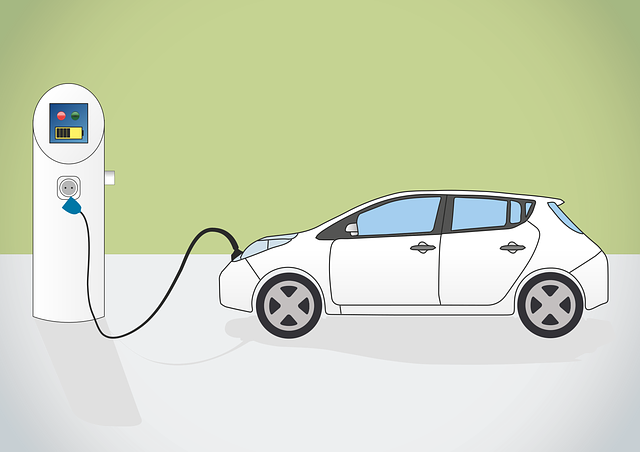Looking to register your car in California? This comprehensive guide walks you through the process, ensuring a smooth experience. First, understand the basic requirements for car registration in the Golden State, including eligibility criteria and necessary documents. Next, gather those docs for a crucial VIN (Vehicle Identification Number) verification step. After passing inspection, complete the registration application, pay fees, and receive your Certificate of Registration. Each step is detailed, making this your go-to reference for successful California car registration.
- Understand the Requirements for Car Registration in California
- Gather Necessary Documents for VIN Verification
- Perform Vehicle Identification Number (VIN) Check
- Complete the Registration Application Process
- Pay Registration Fees and Receive Your Certificate of Registration
Understand the Requirements for Car Registration in California

Before diving into the registration process, it’s crucial to understand the requirements for car registration in California. All vehicles operated within the state must be registered with the California Department of Motor Vehicles (DMV). This involves providing essential documentation and ensuring your vehicle meets safety standards. One critical step is the vin verification process, where you’ll need to present a valid Vehicle Identification Number (VIN) from your car’s registration certificate or title document.
In California, vin inspection can be done through various methods, including a visit to a DMV office or utilizing a mobile vin verifier. This technology allows for convenient and quick vin inspection right from the comfort of your home or on-the-go. By adhering to these requirements, you’ll be well on your way to successfully registering your vehicle in the Golden State.
Gather Necessary Documents for VIN Verification

Before registering your car in California, you’ll need to ensure that all required documents are in order. One crucial step in this process is vin verification, which involves confirming the Vehicle Identification Number (VIN) details. For a hassle-free vin inspection, gather essential paperwork such as the title, registration certificates from previous states (if applicable), and proof of insurance. Additionally, you’ll require a valid driver’s license or state ID card.
If you opt for a mobile vin inspection or use a mobile vin verifier, make sure the service provider is reputable and authorized to conduct such verifications in California. These services can streamline the process by allowing you to complete the vin verification step conveniently, often at your preferred location.
Perform Vehicle Identification Number (VIN) Check

Before registering your car in California, it’s crucial to perform a Vehicle Identification Number (VIN) check. This step is essential for verifying the vehicle’s history and ensuring it’s safe for use on California roads. A VIN inspection helps you uncover any hidden issues or potential problems that might affect your registration process. You can conduct this vin verification through various official channels, including mobile vin inspection services, which offer convenient, on-site checks.
In light of the above, consider opting for a mobile vin verification service to simplify the process. These services bring the inspection to you, saving time and effort. They provide accurate, real-time data on the vehicle’s history, including any accidents, mechanical issues, or outstanding recalls. This information is vital in determining whether your car meets California’s registration requirements.
Complete the Registration Application Process

After gathering all the necessary documents, it’s time to complete the registration application process with the California Department of Motor Vehicles (DMV). This involves filling out Form MV-5, which requires detailed information about your vehicle, including its make, model, year, and unique Vehicle Identification Number (VIN). A crucial step in this process is confirming the VIN through a verification service.
Utilize a reliable mobile vin verifier to ensure a smooth inspection process. This can be done remotely by a professional who will cross-check your provided VIN details with official databases. Alternatively, you may conduct a basic VIN inspection yourself using online tools or apps designed for this purpose. Once the VIN is verified, submit your application along with all required fees and documents to the DMV, marking another step forward in registering your car in California.
Pay Registration Fees and Receive Your Certificate of Registration

After completing your vehicle’s registration application, it’s time to pay the required fees. The California Department of Motor Vehicles (DMV) charges a fee for registering your car, which varies based on the type of vehicle and other factors. You can pay these fees online or in person at a DMV office using a debit or credit card. Once your payment is processed, you’ll receive an official Certificate of Registration, which includes your Vehicle Identification Number (VIN) verification details.
The certificate serves as proof that your car is officially registered with the state. It’s essential to keep this document secure and up-to-date. If you prefer a more convenient option, many mobile vin verifiers or inspection services are available, allowing you to complete the VIN verification process remotely. These services can be particularly useful if you’re unable to visit a DMV office in person.
Registering a car in California involves understanding specific requirements, gathering essential documents for VIN verification, completing an application process, and paying corresponding fees. By adhering to these steps, you’ll ensure a smooth registration experience. Remember, accurate VIN verification is crucial, as it forms the backbone of your vehicle’s identity in the Golden State.
